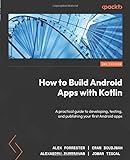To compare BigDecimal values in Kotlin, you can use the compareTo() method. This method returns an integer value that indicates the comparison result.
For example, if you have two BigDecimal variables num1 and num2, you can compare them like this:
1 2 3 4 5 6 7 |
if (num1.compareTo(num2) == 0) { println("num1 is equal to num2") } else if (num1.compareTo(num2) < 0) { println("num1 is less than num2") } else { println("num1 is greater than num2") } |
In this code snippet, compareTo() method is used to compare num1 and num2. The method returns 0 if the values are equal, a negative value if num1 is less than num2, and a positive value if num1 is greater than num2.
How can I compare BigDecimal values with different scales and rounding modes in Kotlin?
To compare BigDecimal values with different scales and rounding modes in Kotlin, you can use the compareTo() method provided by the BigDecimal class.
Here is an example of how you can compare two BigDecimal values with different scales and rounding modes:
1 2 3 4 5 6 7 8 9 10 11 12 13 14 15 |
import java.math.BigDecimal import java.math.RoundingMode fun main() { val value1 = BigDecimal("10.12345").setScale(2, RoundingMode.HALF_UP) val value2 = BigDecimal("10.123").setScale(3, RoundingMode.HALF_UP) if (value1.compareTo(value2) == 0) { println("The values are equal") } else if (value1.compareTo(value2) < 0) { println("Value1 is less than Value2") } else { println("Value1 is greater than Value2") } } |
In the example above, we have two BigDecimal values value1 and value2 with different scales and rounding modes. We use the compareTo() method to compare these two values. The compareTo() method returns -1 if the calling value is less than the specified value, 0 if the calling value is equal to the specified value, and 1 if the calling value is greater than the specified value.
You can customize the rounding mode and scale for each BigDecimal value based on your requirements to compare them effectively in Kotlin.
What is the behavior of compareTo() method when comparing NaN values in Kotlin?
In Kotlin, when comparing NaN values using the compareTo() method, the behavior is defined by the IEEE 754 floating-point standard. According to this standard, NaN values are considered unordered and are not equal to any other value, including other NaN values. Therefore, when comparing NaN values using the compareTo() method, the result will always be inconsistent and implementation-dependent. It is recommended to avoid comparing NaN values directly and instead handle them as a special case in your code.
How to compare BigDecimal values with negative and positive infinity in Kotlin?
In Kotlin, you can compare BigDecimal values with negative and positive infinity using the compareTo method.
Here is an example of how to compare BigDecimal values with negative and positive infinity:
1 2 3 4 5 6 7 8 9 10 11 |
import java.math.BigDecimal fun main() { val bigDecimalValue = BigDecimal("100") val positiveInfinity = BigDecimal.valueOf(Double.POSITIVE_INFINITY) val negativeInfinity = BigDecimal.valueOf(Double.NEGATIVE_INFINITY) println("Comparing BigDecimal value with positive infinity: ${bigDecimalValue.compareTo(positiveInfinity)}") println("Comparing BigDecimal value with negative infinity: ${bigDecimalValue.compareTo(negativeInfinity)}") } |
In this example, we first create a BigDecimal value and then create BigDecimal objects for positive and negative infinity using the BigDecimal.valueOf method. We then use the compareTo method to compare the BigDecimal value with positive and negative infinity. The compareTo method returns a negative value if the BigDecimal value is less than the infinity value, 0 if they are equal, and a positive value if the BigDecimal value is greater than the infinity value.
What is the difference between compareTo and equals in BigDecimal comparison in Kotlin?
In Kotlin, the compareTo method and the equals method are both used for comparing BigDecimal objects, but they serve different purposes.
- compareTo: The compareTo method is used to compare two BigDecimal objects in terms of their numerical values. It returns an integer value that indicates whether the calling object is less than, equal to, or greater than the object being compared. The compareTo method is commonly used for sorting BigDecimal objects in a collection or for determining the relative order of two BigDecimal values.
Example:
1 2 3 4 5 6 |
val num1 = BigDecimal("10") val num2 = BigDecimal("5") if (num1.compareTo(num2) > 0) { println("num1 is greater than num2") } |
- equals: The equals method, on the other hand, is used to compare two BigDecimal objects for equality. It returns a boolean value indicating whether the two BigDecimal objects have the same numerical value. The equals method is used when you want to check if two BigDecimal objects represent the same value, regardless of their internal representation or scale.
Example:
1 2 3 4 5 6 |
val num1 = BigDecimal("10.00") val num2 = BigDecimal("10") if (num1 == num2) { println("num1 and num2 are equal") } |
In summary, compareTo is used for numerical comparison, while equals is used for equality comparison in terms of value.
What is the importance of using BigDecimal for accurate comparison in Kotlin?
When working with floating-point numbers in Kotlin, it is important to use BigDecimal for accurate comparison. This is because floating-point numbers have limited precision and can lead to rounding errors in calculations. BigDecimal, on the other hand, allows for precise representation of decimal numbers with arbitrary precision.
By using BigDecimal for comparisons, you can avoid issues such as equality checks failing due to rounding errors or small differences in floating-point representations. This can be especially important in financial applications or any other situation where accuracy is crucial.
In summary, using BigDecimal for accurate comparison in Kotlin helps ensure that your numerical calculations are precise and reliable, without being affected by the limitations of floating-point arithmetic.
What is the role of the plus and minus scale factor in BigDecimal comparison in Kotlin?
In Kotlin, the plus and minus scale factor in BigDecimal comparison is used to define the precision of the comparison when comparing two BigDecimal values.
When comparing two BigDecimal values, the scale factor is used to determine the number of decimal places that are considered significant in the comparison.
For example, if you use a scale factor of 2, it means that the comparison will only consider up to 2 decimal places when determining if two BigDecimal values are equal. This can be useful when comparing currency values or other values where precision is important.
The plus and minus scale factor can be used in combination with the equals() method or the compareTo() method to perform comparisons between BigDecimal values with the desired level of precision. By specifying the scale factor, you can control how precise the comparison should be.









